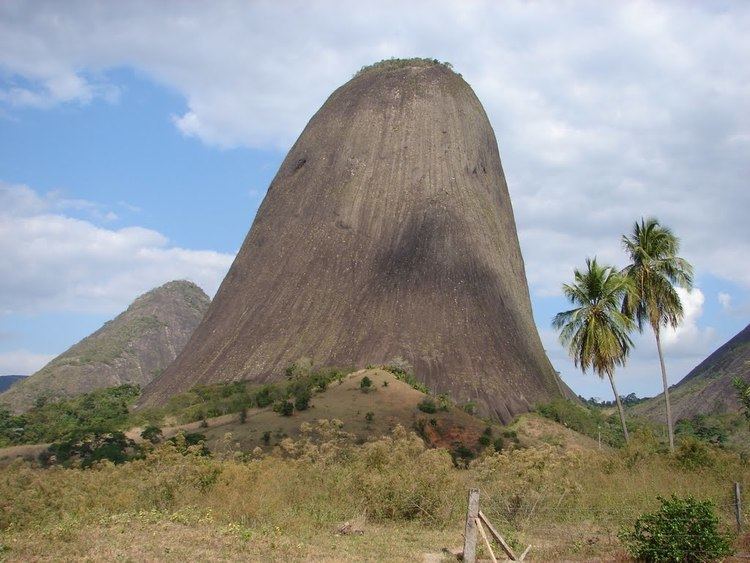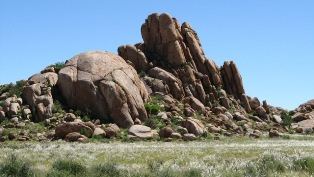 | ||
A bornhardt ( /ˈbɔːrnˈhɑːrt/) is a dome-shaped, steep-sided, bald rock outcropping at least 30 metres (100 ft) in height and several hundred metres in width. They are named after Wilhelm Bornhardt (1864–1946), a German geologist and explorer of German East Africa, who first described the feature.

While bornhardt was originally used to sometimes denote a type of inselberg, the term bornhardt is used in modern literature to refer to domed hills and mountains regardless of isolation in the landscape; thus, not all bornhardts are inselbergs and not all inselbergs are bornhardts. Bornhardts are typically composed of igneous rocks, for example granites. The Sugarloaf Mountain of Rio de Janeiro is a typical example of this landform and is the origin of the common bornhardt nickname "sugar loaf".

Bornhardts are seen at their best in arid and semi-arid regions, but occur over a wide range of climates. Found in diverse topographic settings they mainly occur in multicyclic landscapes. Over geological time bornhardts may degrade to form other landforms such as nubbins (or knolls) and castle koppies.

Depending on their shape they are known as sugar loaves, whalebacks, turtlebacks or simply domes. They are locally known as dwalas, half-oranges, matopos, etc. Often, the underlying geological fracture pattern is shown by the surface arrangement of bornhardts, as can be seen in the Kamiesberge of Namaqualand and the Everard Ranges of Central Australia.

